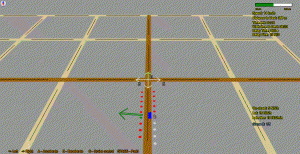From Theory to Practical Implementation
PI: Eran Ben-Elia
Funding: Transportation Innovation Institute, Tel Aviv University, 2015-2017
The goal of urban parking policy is to establish the prices and the constraints in a way that provides the best possible parking options for residents and visitors alike. The patterns of urban parking supply and demand are extremely heterogeneous and never fit each other. As a result, no matter what parking policy is accepted, the majority of cities lack parking space in the business centers during the days and in the residential areas at night. When new parking space is provided, the number of people arriving to the area by cars grows and the imbalance is reestablished. To resolve this problem, theory suggests varying parking prices in a way that a certain fraction of the parking places will always remain free. The only way to preserve this fraction is to make parking prices adaptive and to raise them locally, when a demand for parking on a certain street segment or parking lot is higher than a supply, while decreasing it when the situation is opposite.
Typically, establishing adaptive parking prices demands establishing on-street sensors and thus, is very costly. We claim that adaptive and dynamic parking prices that vary between street segments and lots, can be established and reported to the driver in advance. We do that with a spatially explicit agent-based model that simulates parking behavior and reaction to parking prices. We estimate the changes in driver’s parking search behavior with the help of a virtual reality and serious game.
Once the rules of adaptation and prices elasticity are identified, dynamic pricing can be easily implemented using information and communication technology (ICT) architecture and distributed to drivers via smartphone apps. This makes dynamic parking pricing an important attribute of Intelligent Transportation Systems in the Smart City of a future.
Park Game 3D Demo:
Park Game 2D Demo:
Try and download Parkgame:


